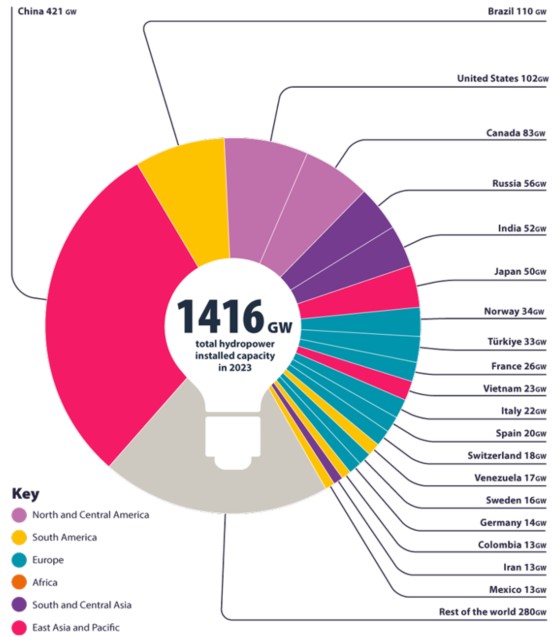- Definition and Types of Energy
- Myths And Misconceptions About Energy
- The Relationship Between Energy and Environment
- Climate Change and Carbon Footprint
- Greenhouse Gas Effect
- The Role of Human-Induced Greenhouse Gases and Energy Consumption
- Energy Efficiency and Sustainability
- Renewable Energy Sources and Future Perspectives
- Play and Learn
- Solar Energy Conversions
- Solar Energy Worldwide
- Solar Energy in Partner Countries
- Positive and Negative Impacts
- Technologies for Harnessing Solar Energy
- Solar thermal energy technologies and applications
- Electricity Generation Methods
- Passive Heating and Cooling of Residences with the Sun
- Concentrator solar power (CSP) systems and electricity generation
- Systems and Applications That Generate Electricity directly from solar rays
- Photovoltaic Cells and Panels
- Domestic PV Systems
- Off-Grid PV Systems
- Hybrid Connected Systems
- Materials Used in PV Cells
- Play and Learn
Hydraulic Energy in The World
Hydraulic energy is considered one of the most important renewable energy sources worldwide. Annual precipitation is approximately 119 thousand km³, 60% of which evaporates and 40% reaches lakes and seas through streams. In total, approximately 19% (9 thousand km³) of 47 thousand km³ of water is economically and technically usable.

However, only a small portion of hydropower is used effectively worldwide. Most of the unused potential is in Latin America, Asia and Africa. Especially in developing countries, it is aimed to evaluate this potential more efficiently by installing new hydroelectric power plants.